Rug layering is a trend that has been around for a while, but is now picking up popularity. The concept is fairly simple, you just lay a rug on top of another rug. For many people, the question is, why would you want to do this? Doubling up on carpets may seem odd, but there are actually a few good reasons you should be doing it.
Let’s take a look:
Rug Layering For Aesthetics
There’s something sophisticated about a space with double rugs. When done correctly, rug layering makes the space look much better and can change the feel of the space immensely. Depending on the pattern or color you select, you can give a room a whole new look.
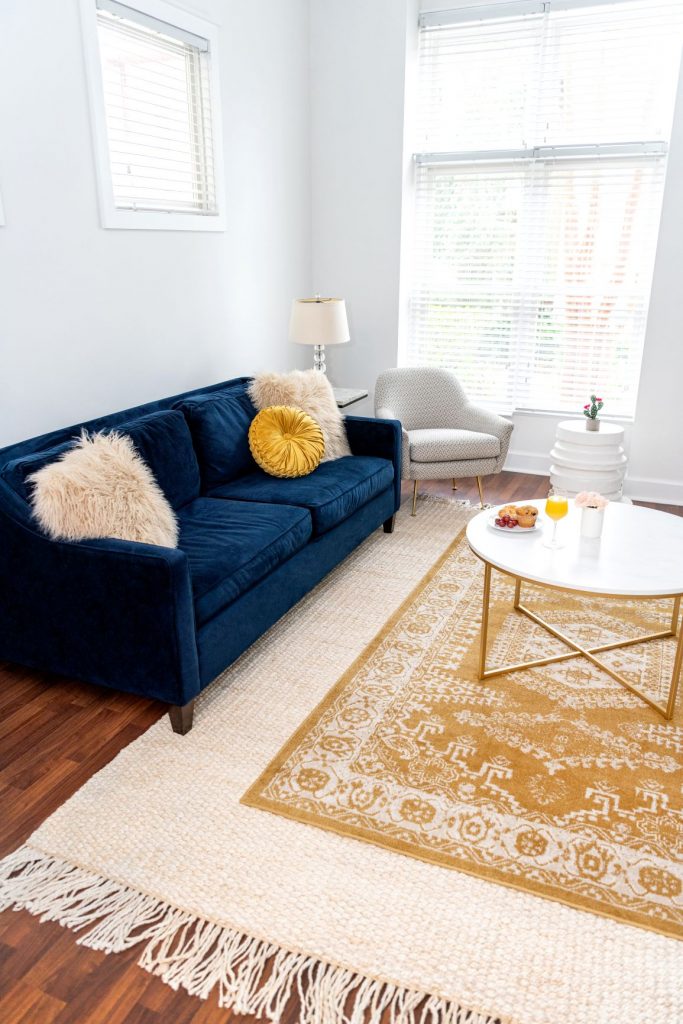
The layered method of using rugs is also a great way to make a space feel richer and more comfortable. It provides an extra level of décor that rooms with plain floors or just one throw rug are missing.
Rug Layering to Define a Space
In more open spaces, you may have several areas that serve separate purposes. For example, a kitchen, dining area, and living room may all be in one room. You can use rugs to define these spaces. In this case, you would use a large rug to create a main space and place the furniture within it, then use another to pull the eye to the center of the “room.” The size of the rug matters, so pick something that will work for the space. Remember that you can also add multiple carpets overlapping.
Rug Layering to Reduce Noise
You already know that carpets bring the noise level down by absorbing sound waves. It may seem obvious then that having more than one rug in a room will help dampen the sound even more. The additional sound absorption qualities give you a space that is comfortable for talking in, recording, or listening to music, since it will be without echo.
Any type of carpet can reduce the echo of the room, particularly when combined with furniture. Adding another rug on top of the first will only serve to dampen the sound even more. The texture will also have an effect, so if your space is particularly prone to echoes, look for a plusher floor covering to absorb even more sound.
Rug Layering to Show Off Older Rugs
Do you have an older rug that is already worn, but you still love it? The perfect solution is to use it under another rug. If you use a smaller one, you can position it over the worn spots and still feature your favorite floor covering. This can be done with torn carpets, as well, simply place another rug over it and you immediately have a beautiful, trendy look while protecting the other carpet.
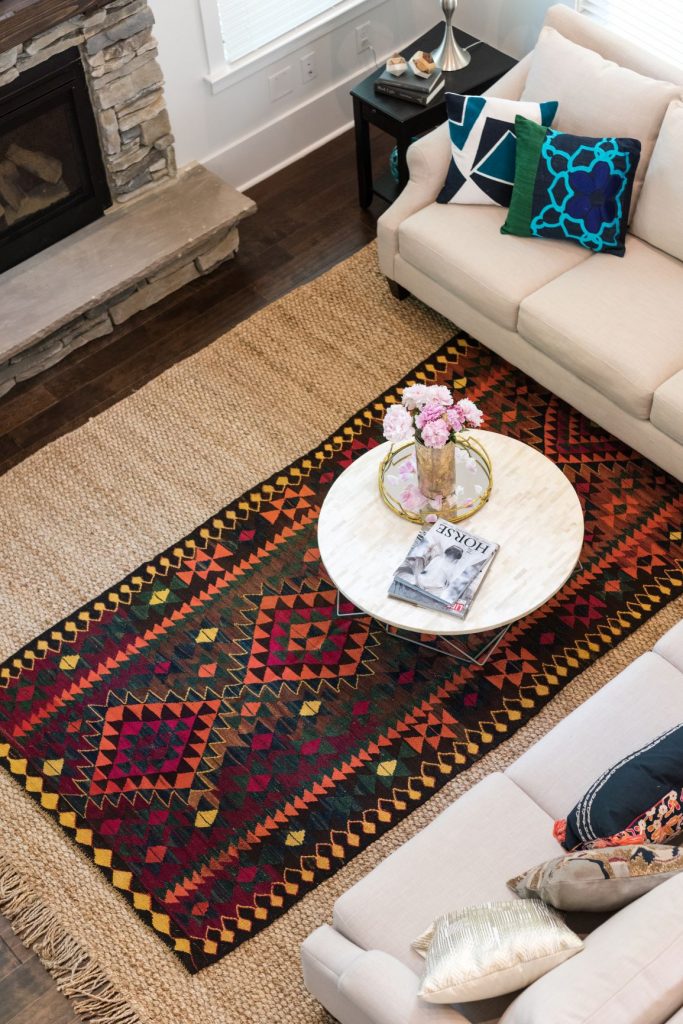
This may be particularly useful in entranceways and halls, as the center of the carpet will become worn faster than the outer edges. Simply add another runner down the center and you immediately rejuvenate the space.
Rug Layering to Add a Pop of Color
Area rugs are great for bringing out a particular color in a room, but when you layer rugs, you can easily bring more color into the space. Have a neutral living room with a tan and brown carpet? You can add another with yellow or red in it to bring out the brightness in the room. Add a few throw pillows with similar tones and you have a perfectly designed room.
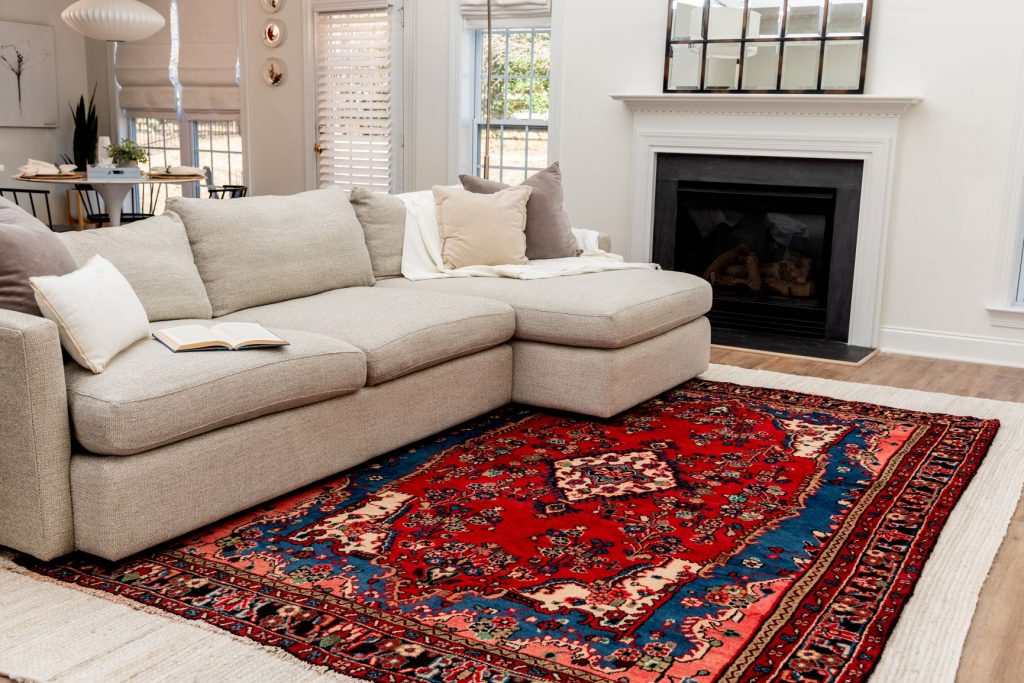
Smaller throw rugs can give you some excellent pops of color, without taking over and when used over an existing carpet or area rug, they will look natural. Your colorful rugs don’t need to take up a lot of space this way, but they will still add to the room.
Rug Layering to Create a Warmer Room
Carpets, as a textile, bring a special warmth to a room. Even when using cooler colors, a carpet softens the space and gives it a more comfortable aspect. Not only does the fiber give the room a warm look, it can actually increase the temperature on cooler days, thanks to the insulating effect it has.
Look for thicker, more textured rugs if you would like to warm the temperature of a room. You can replace it with a thinner one when summer comes. The thinner rugs look great and add visual warmth while providing a cooler feel.
How to Layer Rugs the Right Way
There are so many ways to layer rugs, but you need to keep a few things in mind. It rarely works to simply toss a rug on top of another one without a solid plan in place. You may need to experiment a few times to figure out exactly what looks right, but the great news is that rug layering can be changed up as often as you like.
Choose the Perfect Rugs
Selecting the right floor coverings is probably the most important part of this entire process. You’ll need to consider a few factors, including the thickness of the carpet, the colors chosen, and which patterns to combine.
When it comes to colors, you’ll want something that will work with the existing space. Often this means choosing a complimentary color or picking up tones that are already in the room. Ideally, you’ll already have a color scheme picked out and can just choose your rugs based on that.
Patterns are also important. Chances are, you’ve heard that it’s a bad idea to mix patterns, but that’s more for fashion than floor coverings. When it comes to rugs, you can certainly mix your patterns, but it’s a good idea to either make sure they go together, or to pick one very patterned rug to combine with a simpler one.
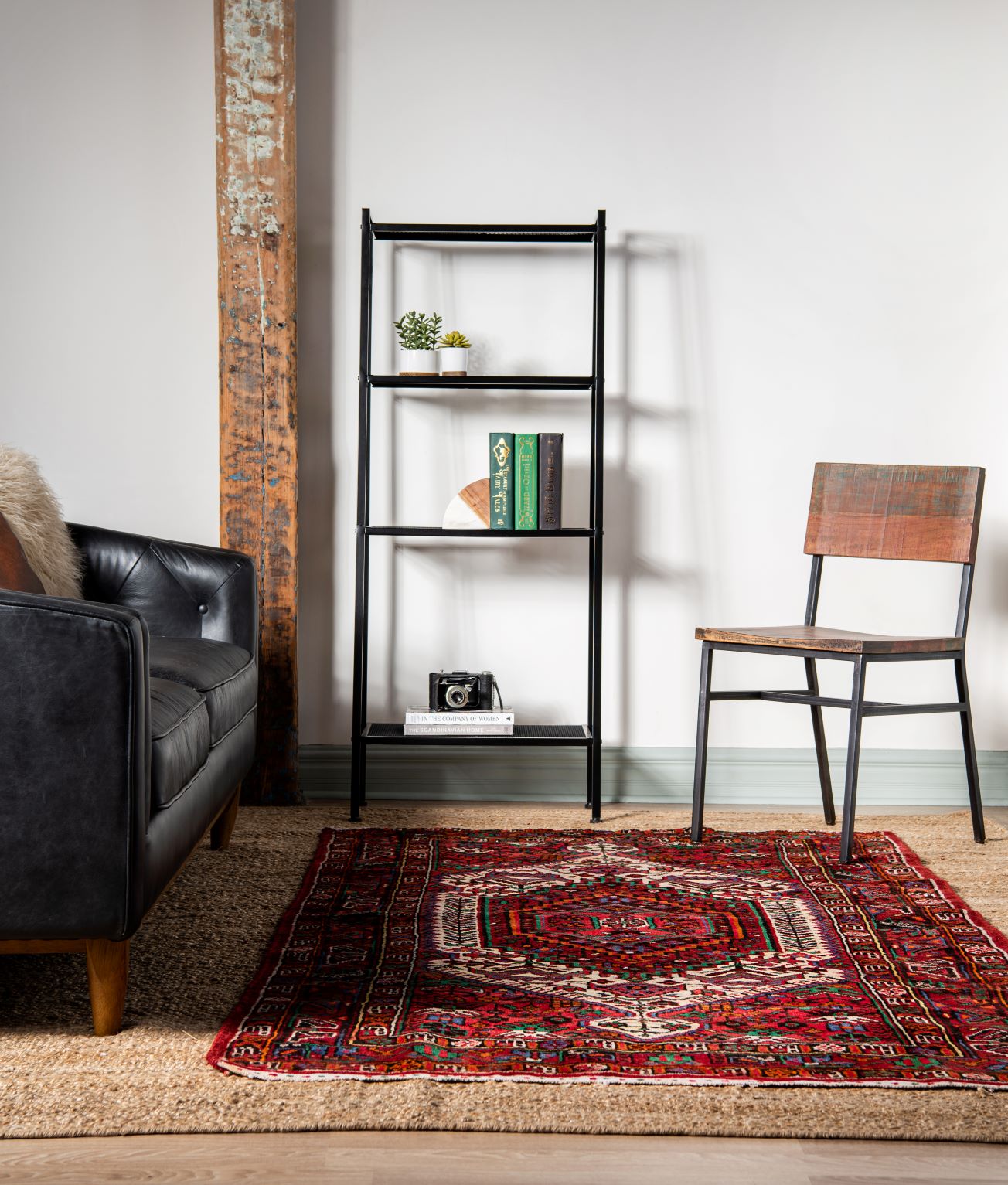
Most people find that the best option is to use a more neutral and flatter weave carpet for the bottom layer and then add texture and color with the next layer.
Many of the guidelines for selecting a rug in the first place can be used to choose two rugs that you’ll overlap or layer.
How to Place Layered Rugs
Now that you have the rugs chosen, you’ll need to figure out how to position them on your floor. This will depend on the space you have and the sizes of the rugs.
Basic Layering: With this method, you place the larger carpet down and then the other in the middle of it. It’s simple, easy, and the go-to method for first timers.
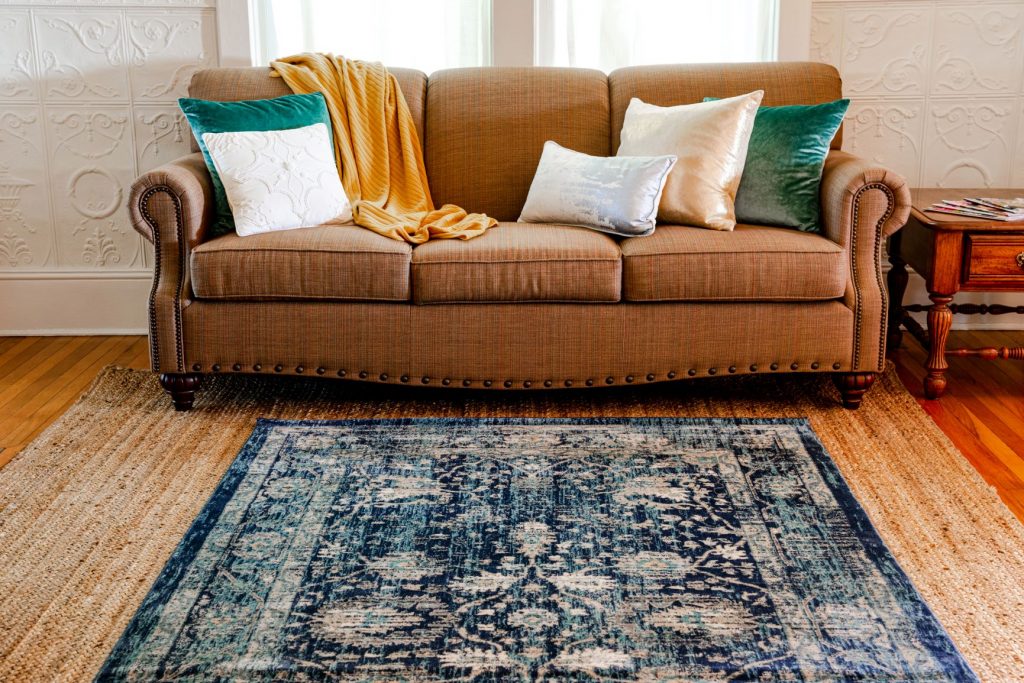
Diagonal: This method has you place one rug down and then place the other on it, rotating 45° so the top rug is laying diagonally on the other one. This is a great way to go if the rugs are the centerpiece and focal point of the room.
Overlapping: Have a larger space, but only two smaller rugs? No problem . . . just overlap the edges to make a larger rug. You don’t have to put them side by side, either, you can turn them to have the rugs diagonally in the room. Another option is to place two smaller rugs on either side of a larger rug to expand it. Don’t be afraid to overlap multiple rugs to cover a larger space. This also works well in the entrance or a hallway, where you can use two smaller, narrower rugs to create a runner.
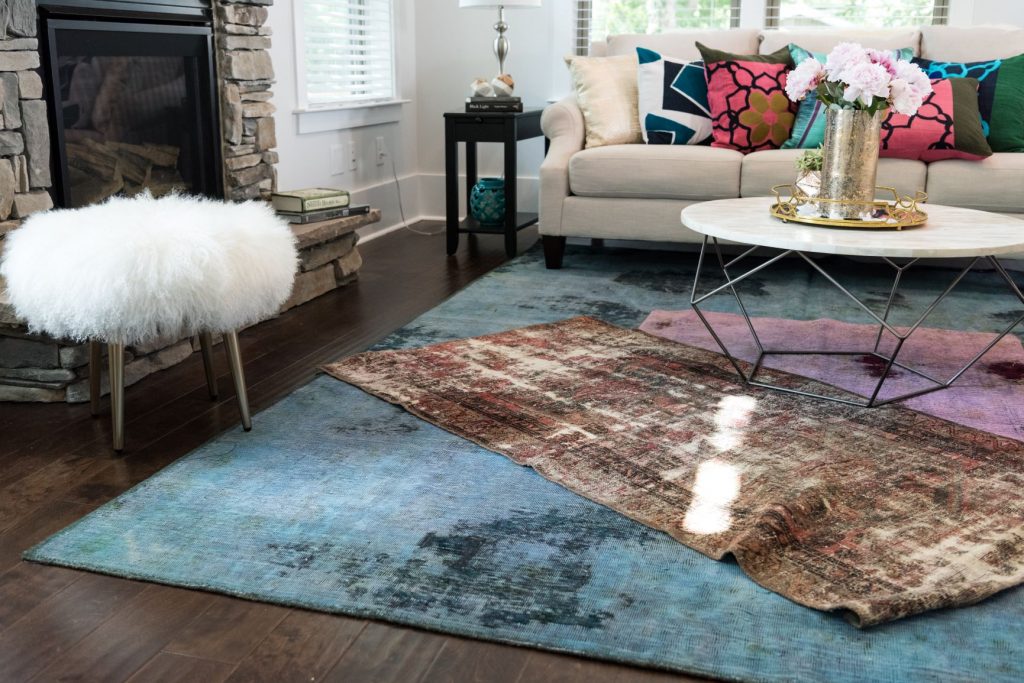
Rug on Carpet: Finally, you can use area rugs on carpeted rooms. Just because you have wall-to-wall carpeting doesn’t mean you can’t use a beautiful rug in the same space. Just choose your rug and place it as you would with a hard floor.
As you can see, there are plenty of options when it comes to layering and there is nothing wrong with experimenting to see which option you like best.
When NOT to Use Rug Layering
Is there ever a time when you shouldn’t do rug layering? While most spaces will look great with this method of décor, there are definitely places you should avoid it.
Stairs should never have any type of rug that is not actually designed for the stairs. You never want to layer rugs on a staircase, either, since it can be hazardous. In fact, anywhere that could be hazardous should be carefully considered before you add an area rug. Kitchens, for example, rarely do well with rug layering, since they can create a tripping hazard there.
You should also keep safe by ensuring the bottom rug will not slip. This can be done by adding a carpet pad underneath. In general, rugs on top of rugs will not slip or slid, but if you find this is an issue, be sure to address it before someone gets injured.
Now that you know what rug layering is and how to do it effectively, it’s time to start decorating your home. You’re no longer limited by one rug per space, so you can enjoy collecting your favorite patterns and designs to decorate with. Rugs.com offers a wide variety of affordable rugs that will suit every part of your home. We recommend starting with a natural jute rug as a base, and going from there!

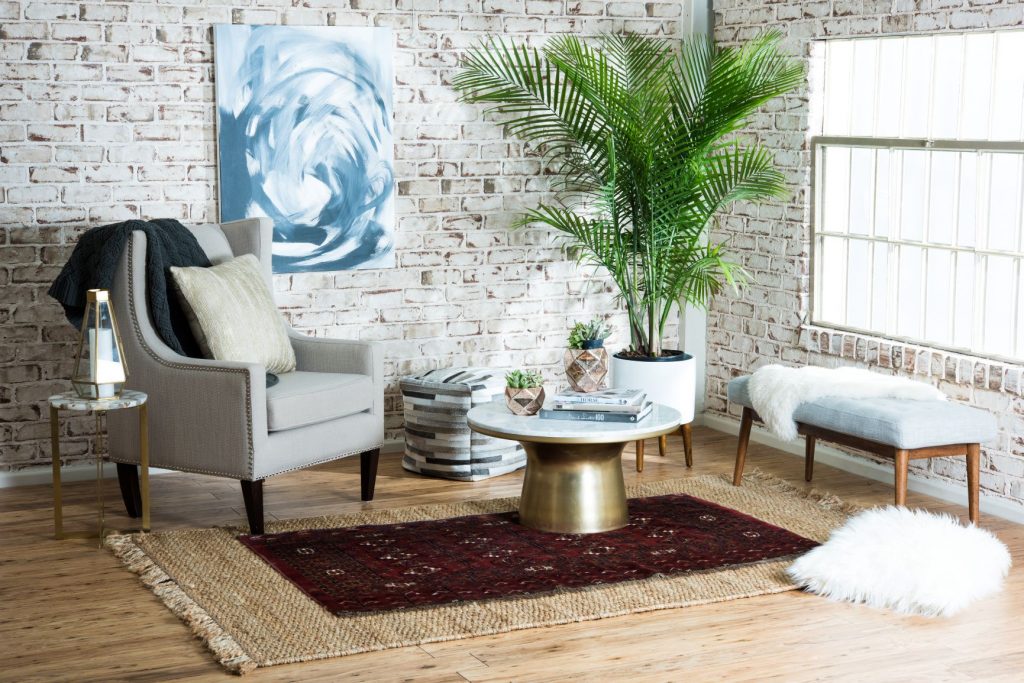
I was really interested in the part of your article that mentioned how rug layering can actually reduce the noise you experience at home. Having everyone stay at home and work all day can be a bit frustrating due to all the natural noise we make. I’ll take your advice and solve this by looking for some hand-crafted rugs and layering them so we can add some nice decoration in the process.
Do the rugs need to be directly on top of each other or can they come out off the top of one another ?
There are plenty of examples of people layering rugs that way! Ultimately, it’s your home and if you like how it looks, you should do it!
I am completely bemused by this whole layering rugs design fad! Why spend money (probably a lot) on a rug that I assume one loves and then invest in another one to cover the majority of it up? Seems like a design idea for the well-off……